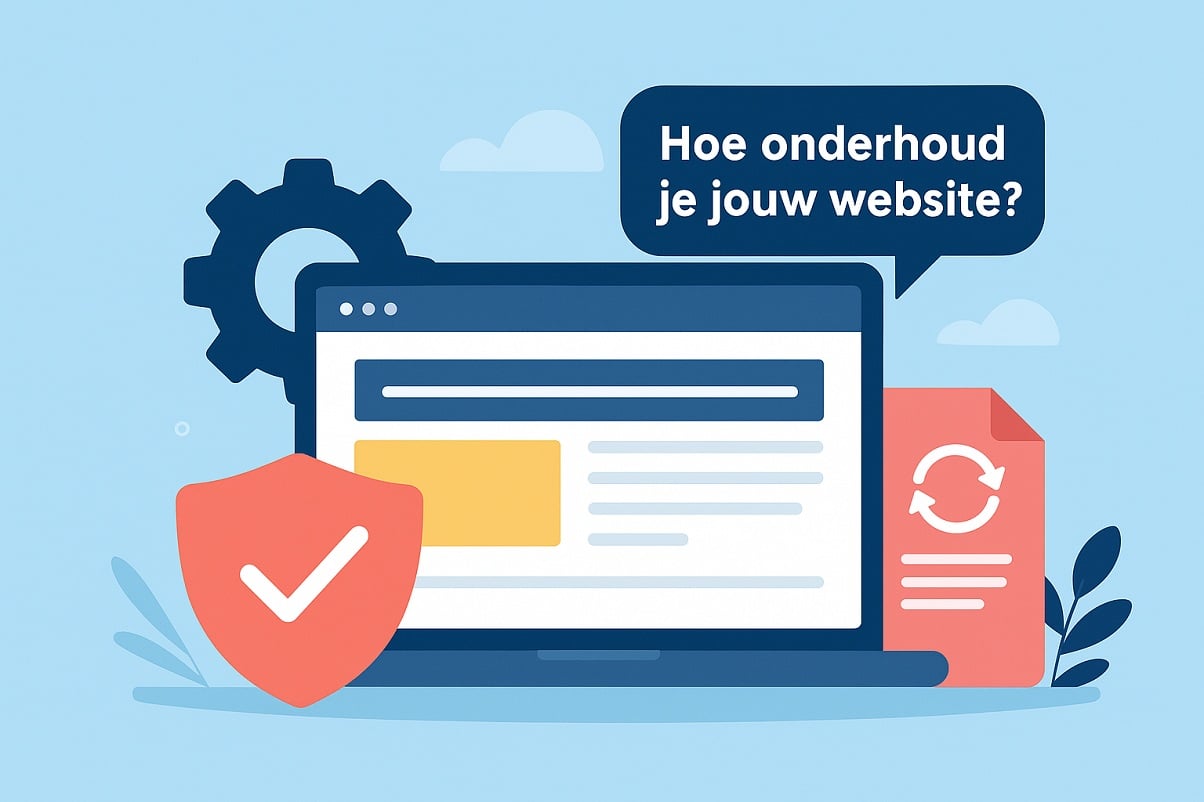How do you maintain your website?
We still see it every week: a website that hasn't been updated for an extended period of time. With minimal maintenance, you can ensure that your website not only remains safe for visitors, but also that your work is not completely lost. In this blog post, we take a look at the simplest maintenance routine that will ensure your website remains secure and up-to-date.
Like any technology or aspect of life, a website needs to be maintained, you can liken it to keeping your house clean. If you neglect this for a while, it will be a lot more work to get it clean again than if you maintain it every week. The following steps, which you can carry out at least once a month, will keep your website up to date and ensure that it doesn't get lost.
Create and maintain a backup
A backup is essential for a website and should be set up. This can be done in a number of ways, and once it's set up, you have very little work to do. Unfortunately, a backup is not enough in some situations, because only a backup of a very old website cannot be restored if the underlying technology is no longer supported. In addition to a backup, you also need to carry out maintenance work on the website itself.
Backups can be performed via the control panel with a scheduled task or a task that repeats according to a schedule you specify. However, you can also set them up yourself via your content management system, often with the help of a plugin. Having a backup copy in the same place as your website is a good thing, but not absolute protection in the most impossible situations. The rule is that you should store your backups in three different places.
One of these can be in your hosting space, one in a cloud service such as Microsoft Onedrive or Google Drive and one on your local computer. This way you always have a backup to fall back on if 1 fails and in the most unlikely cases 2 fails.
Note that backups also require storage space and you are not backing up your backups. This can grow exponentially. So when you do your monthly maintenance, also check that the backups are in order and clean them up if necessary.
Maintenance of content management systems
Most websites are created in a content management system, for example WordPress, Joomla or Umbraco. The "core" files of the CMS receive updates from time to time, which you often need to install soon. With almost every CMS, you can install these with just a few clicks via the website's administrator environment. For major version updates, it is advisable to check your backups beforehand. This way, you can roll back at any time if something goes wrong.
It is also possible for WordPress to install these core updates automatically, in most cases we recommend enabling this. If you also receive emails about this, you can check directly after the update whether everything went well.

Maintenance of plugins and themes
On a website created with a CMS, plugins and themes are often installed to add more functionality, especially with WordPress it is highly recommended to keep this list as short as possible. Especially if you want to minimize the maintenance effort for your website. So take a critical look at each plugin and remove the themes you are not using from your website. Even inactive themes and plugins can still pose a risk, which is why it is better to remove them.
The maintenance of plugins and themes begins even before installation. Before installation, check the ratings, the frequency of updates and whether they meet your requirements. Careless installation of plugins and themes that are subsequently removed can also put unnecessary strain on your database. The result is a slower website.
Be critical here and do your homework before installing a component.
Most CMS plugins and themes can also be updated automatically, but it is also advisable to be notified by email. This way you can intervene quickly if necessary and don't have to find out about it afterwards.
PHP or ASP version
The underlying PHP or ASP version can also have a major impact on the accessibility and security of your website. With Umbraco, you must pay attention to the ASP.NET (Core) version used. With WordPress and Joomla, you need to pay attention to the PHP version. You can easily find and change this in our customer panel in your hosting package. And update to the latest version with a click of the mouse. As this version changes more slowly than other maintenance work, you can make provision in your calendar to check it every six months, for example.
Make use of your calendar
You may think you'll remember all this and work on it regularly, but in practice it's often different, and a certain amount of laxity can creep in over time. Therefore, use your calendar in your MijnHostingPartner.nl e-mail address or in a calendar that you already normally use. Fifteen minutes of work per month will ensure that your website remains secure and stable. As a webmaster or website administrator, it is up to you to take this seriously.
Would you also like a cheap and fast hosting package so that you can realize your online dreams? Then take a look at our packages now!
